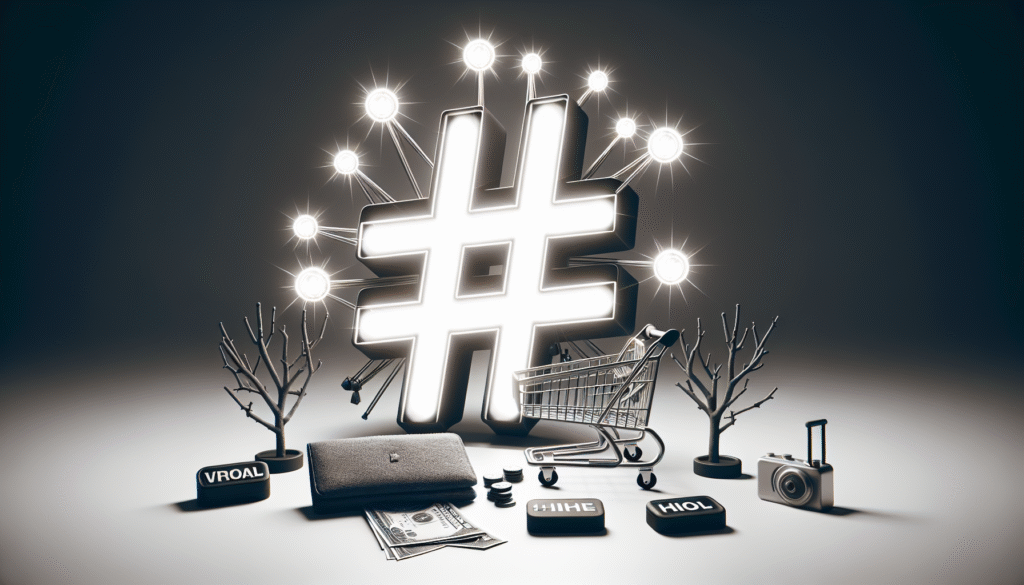Have you ever wondered how something that catches the world’s attention can still fail spectacularly in achieving its goals? We’re about to unravel the curious case of a viral product that, despite its whirlwind fame, converted no interest into sales. Trust us, it’s a wild ride full of twists and turns.

The Allure of Going Viral
The term “going viral” has been plastered across the internet as the golden ticket to success. We associate virality with fame, influence, and, most importantly, profit. It’s the modern-day equivalent of finding a pot of gold at the end of an internet rainbow. Companies dream of their products breaking the internet, imagining it’ll lead to a flood of customers clamoring to buy.
The Promise of Virality
Virality promises exposure, and in our connected world, exposure is everything. It means reaching people from every corner of the globe. We often hear about how a video, tweet, or meme went viral, catapulting its creator to stardom overnight. The prospect of a product riding this wave sounds truly irresistible.
The Reality Check
Despite the shiny potential, not all that shares is gold. Virality brings attention, but does it bring customers? We must remember the digital crowd may appreciate, laugh, or share, but admiration doesn’t guarantee conversion. The reality of this disconnect is the crux of our story.
The Birth of a Viral Sensation
To better understand how it all went wrong, let’s journey to the beginning of our viral product’s tale. It started with a creative team convinced they had a winner on their hands, bolstered by thorough market research, an innovative concept, and a dash of originality.
Ideation and Hype
The product was born out of a brainstorming session like many great inventions. Every member of the team was excited. We felt like inventors on the brink of something revolutionary. A perfect fusion of utility and novelty that answered a genuine need in a way nobody else had considered.
The Perfect Launchpad
Armed with promotional strategies tailored for maximum impact, we were confident. Social media alliances were made, influential voices were aligned, and creativity was at an all-time high. The product wasn’t just launched; it was catapulted into the digital realm.

The Avalanche of Attention
And boy, oh boy, did it launch. The product soon caught the internet’s imagination. We were the talk of the town; everyone online seemed to be either discussing or sharing it.
Engagement Through the Roof
Metrics flew off the charts: shares, likes, tweets, pins — a digital marketers’ dream. Our dashboards looked like a fireworks display. Influencers mentioned it, celebrities used it (or at least held it on Instagram), and everywhere we looked, there were articles about ‘The Viral Product.’
What Went Right?
Everything seemed perfect from the outside looking in. The initiation, the engagement — it was all flawless. But only on the surface. What could possibly go wrong at this point? As it turns out, quite a lot.
The Chilling Silence of Sales
After the initial excitement, reality slowly set in. Despite reaching millions, actually converting this interest into sales felt like chasing ghosts.
The Post-Viral Lull
Initially, we assumed the numbers were simply lagging. It couldn’t be that bad, right? But soon, the honeymoon of virality shifted to uncomfortable silence. Conversion rates flatlined. It was inexplicable: how could so much noise yield so little action?
Deciphering the Disconnect
We realized that going viral had caught people’s curiosity, but not their wallets. Our dream product was like trying to sell snow in Antarctica — everyone had other plans. This misfire wasn’t just baffling; it was a humbling lesson in the complexities of consumer behavior.
Analyzing the Failure
Acknowledging the failure was tough. We needed to dig deep to understand what went wrong and why our oceans of attention didn’t translate into streams of conversion.
Overestimating Virality
Going viral, we learned, isn’t a foolproof strategy. The attention we garnered was fleeting, not lasting. We overestimated the power of virality, failing to realize that sustaining interest demands continuous engagement, which we hadn’t planned beyond the initial launch.
Misalignment with the Audience
In retrospect, we also realized there was a misalignment between the audience impressed by the product’s appeal and those actually in need of it. The buzz attracted many spectators, but few genuine buyers. Our understanding of the target demographics needed tweaking.
Product-Message Mismatch
Finally, the message itself wasn’t tailored to convert. Our creative storytelling, while catchy, didn’t convey the product’s actual value proposition effectively. Like selling a joke’s punchline to someone without setting up the joke, the message felt disjointed.
Lessons Learned
The experience taught us invaluable lessons. We emerged with insights that could guide others seeking to crack the viral code effectively.
1. Virality is Not a Business Model
We learned the hard way that virality is a catalyst, not a solution. Sustainable business requires a more robust strategy that aligns marketing efforts with sales conversions.
2. Understanding Your Audience
Who is genuinely interested, and who is merely intrigued? This distinction is critical. We now believe audience research is the cornerstone of any marketing strategy.
3. Crafting a Clear Message
A viral moment should seamlessly integrate the product’s value proposition with its appeal. Long-lasting impact requires clear, concise communication that converts admiration into action.
4. Building for Retention
We also discovered the importance of building customer journeys that don’t stop at purchase; they must generate loyalty and repeated engagement to keep momentum alive.
The Future of Viral Marketing
What’s next after a setback like this? We remain optimistic about the possibilities viral marketing still offers, with certain adjustments to our strategies.
Evolving Tactics
We strive to evolve our tactics, integrating data analytics and real-time customer feedback more closely into our processes. The next time we seek virality, it will be with a more measured approach.
Resilience and Adaptability
We also focus on building resilience and adaptability. In an ever-changing digital landscape, being ready to pivot is crucial. We’re committed to evolving our methods continuously, learning from the past to inform the future.
Conclusion
If there’s one takeaway, it’s that while viral sensation holds immense promise, it doesn’t always equate to sales. Our journey with the viral product was humbling yet enriching. As we continue our efforts, we carry the lessons learned as a roadmap for future endeavors. Through it all, we remain cheerful and hopeful, knowing that each setback paves the way for new opportunities.
